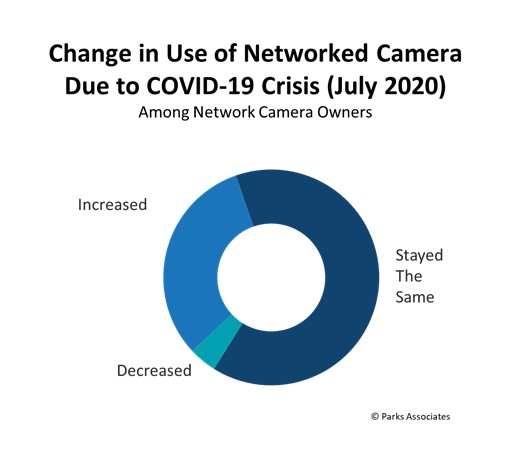Parks Associates' study "Context is King: Smart Home Video and Audio Analytics"examines how video and audio analytics are evolving and impacting the smart home user experience and profiles companies that are driving the technology forward. Innovation in video and audio analytics drives new applications and services like facial, emotional, gender, and object recognition, creating dramatic new capabilities to understand the context and deliver value. Embedding microphones in devices throughout the home to deliver a voice interface creates opportunities to extend value through sound recognition and notifications. Detection of glass breaking, or a baby crying provides clear value to consumers.
Local vs. centralized computing/operation remains a key point of consideration for consumers and device makers alike when buying/developing, and marketing smart devices. Each approach has its pros and cons. Some developers have taken the initiative of creating hybrid models that would allow the device owner to enjoy both benefits. Edge (local) computing stores and analyzes data as close to the source as possible. In most instances, this process occurs either inside the device or a connected hub within the home. Alarms, smoke detectors, and other security-oriented devices tend to have more capable edge processing to reduce response time during emergencies. Edge processing requires more energy, space, and overall cost to ensure that chipsets are powerful enough and software is sufficiently sophisticated to be able to successfully store data within the device. However, edge processing is limited to the available amount of local storage, while cloud services offer "unlimited" storage. Users that prefer local storage do not have to rely on potential inconsistencies of cloud connectivity so long as their local network is operational. In addition, local storage doesn't include recurring charges, a feature all cloud subscription services possess.

According to Parks Associates commentary, edge processing trades price for performance, while cloud processing trades privacy for performance. Edge computing has lower latency than cloud computing but also runs the risk of complete data loss should a device fail. Cloud computing features potentially more inexpensive devices, but the efficiency of said devices depends on the cloud's functionality (which can fluctuate). Consumers also have privacy concerns regarding sharing their device information as it moves to and from the cloud. A hybridized approach to smart devices has gained traction in recent years, as developers have tried to create technology that leverages edge and cloud processing advantages. "Sandboxing" is a mechanism that separates data in local and cloud storage depending on which data can be more efficiently processed locally (or in the cloud). Essentially, private information can be processed locally by the device, while the cloud can handle software updates and other performance metrics. However, devices that combine edge and cloud connections feature both approaches' weaknesses, including the upfront cost for edge capabilities and the recurring charges associated with cloud subscription services.
For more information on how video and audio analytics are evolving and impacting the smart home user experience, visit the "Context is King: Smart Home Video and Audio Analytics” report.

